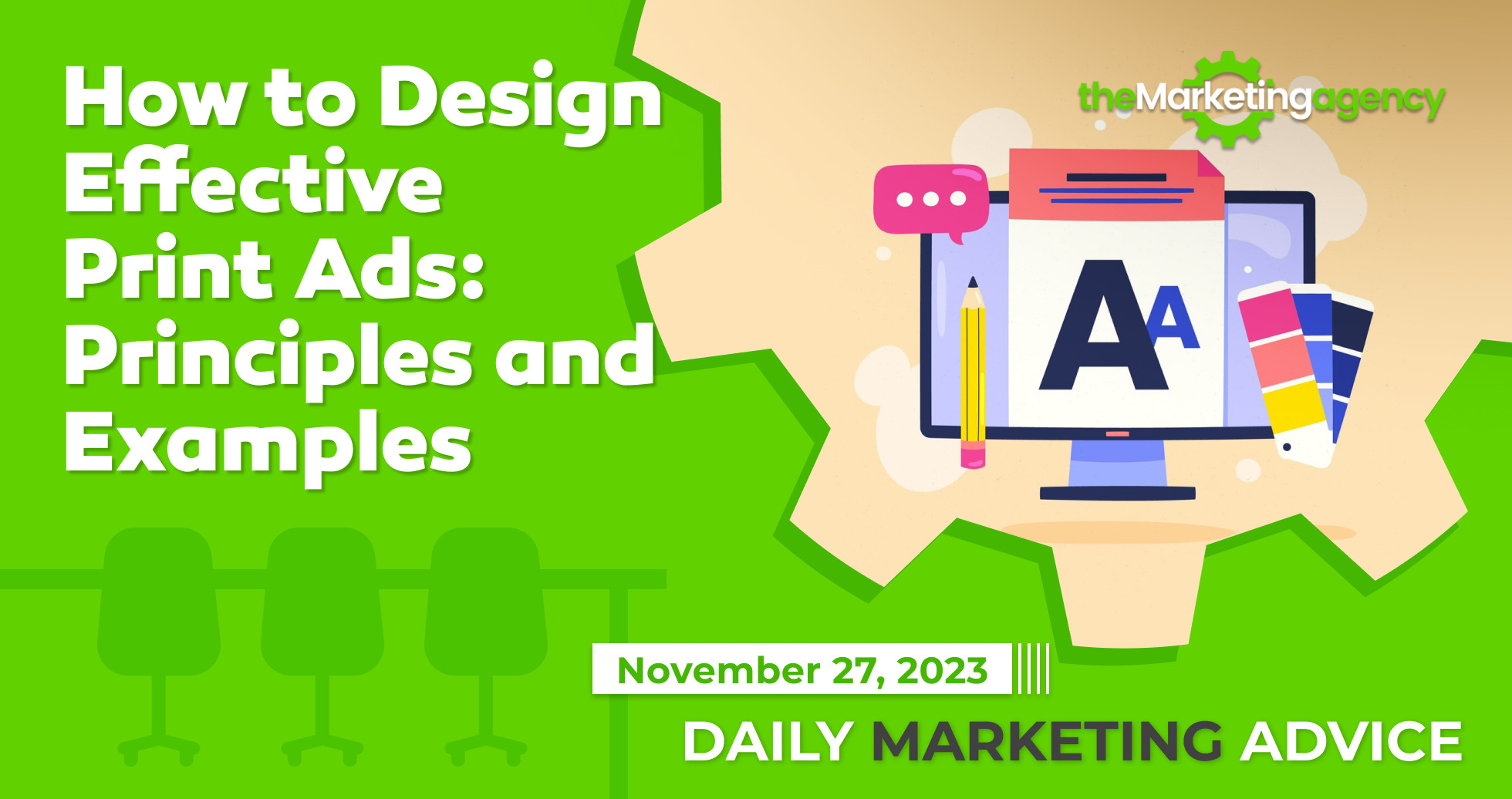How to Design Effective Print Ads: Principles and Examples

Alright, my fellow marketers, today we're diving into the captivating world of print advertising. We live in a digital age, no doubt, but there's something timeless and powerful about a well-crafted print ad that can't be ignored. It's an art form, a delicate dance between visuals and words that can leave a lasting impression. So, buckle up, because we're about to unravel the principles and examples that will take your print ads from 'meh' to 'mind-blowing.'
Understanding the Power of Print
In a world bombarded by digital content, print ads offer a refreshing break. There's a tangible quality to them, a physical presence that commands attention. Now, before you scoff and think print is a relic of the past, remember that a well-designed print ad can still turn heads and make an impact.
Principle 1: Know Your Audience
First things first, who are you talking to? Understanding your target audience is fundamental in any form of advertising, and print is no exception. You wouldn't talk to a group of gamers the same way you'd talk to a group of gardeners, right?
Consider the demographics, interests, and preferences of your audience. What appeals to them? What language resonates with them? Whether it's a sleek tech magazine or a rustic lifestyle publication, tailor your design to speak directly to your audience.
Principle 2: Keep It Simple, Stupid
Now, I'm not calling you stupid, but there's a famous saying in the design world: KISS – Keep It Simple, Stupid. The point is, simplicity is key. Don't overwhelm your audience with a cluttered mess of visuals and text. Your message should be clear, concise, and instantly recognizable.
Think of your print ad as a visual elevator pitch. What's the one thing you want your audience to remember? Make that the focal point. Whether it's a striking image, a catchy headline, or a combination of both, simplicity ensures your message gets through the noise.
Principle 3: Visual Hierarchy
Alright, let's talk about visual hierarchy. This is the secret sauce that guides your audience's eyes through your ad. You want them to follow a natural flow, absorbing information in the order you've intended.
Start with a strong focal point – something that demands attention. It could be an eye-catching image or a bold headline. From there, guide your audience through the essential details. Use size, color, and placement strategically to create a hierarchy that leads to the call-to-action.
Principle 4: Typography Matters
Typography is often the unsung hero of design. The fonts you choose convey more than just words; they convey personality. Consider the tone of your message and your brand when selecting fonts.
Avoid the cliché fonts unless you're going for a retro vibe. Experiment with typography that reflects your brand's character. Just remember, readability is non-negotiable. A visually stunning ad won't do much if your audience can't read the message.
Principle 5: Harness the Power of Color
Colors evoke emotions, and that's a fact. The psychology of color is a deep well, and understanding it can give your print ads an emotional punch. Blues may convey trust, reds grab attention, and greens suggest freshness or eco-friendliness.
Consider your brand colors and the emotions you want to evoke. Consistency across your ads builds brand recognition. Experiment with complementary colors that create visual harmony. Don't be afraid to think outside the box – sometimes, a pop of unexpected color can make all the difference.
Principle 6: Tell a Story
People love stories. They connect with narratives on a deep, emotional level. Even in the limited space of a print ad, you can weave a compelling story. It doesn't have to be a novel; it could be a before-and-after scenario or a journey of transformation.
The key is to make your audience feel something. Whether it's nostalgia, excitement, or inspiration, a well-told story lingers in the mind long after the page is turned.
Principle 7: Embrace White Space
White space isn't just empty space; it's a powerful design element. It gives your content room to breathe, allowing your audience to focus on what matters. Don't be afraid of a little emptiness – it can enhance the overall visual appeal.
Balance is the key. Too much white space can make your ad feel incomplete, while too little can overwhelm. Experiment until you find the sweet spot that complements your design.
Principle 8: Integrate a Strong Call-to-Action
Your print ad should prompt action. Whether it's visiting a website, making a purchase, or signing up for a newsletter, a clear and compelling call-to-action (CTA) is non-negotiable.
Place your CTA strategically, ensuring it doesn't get lost in the design. Use action verbs and create a sense of urgency. Your audience should know exactly what steps to take next.
Examples of Effective Print Ads
Now that we've dived deep into the principles, let's look at some real-world examples that embody these principles:
Example 1: Apple's Minimalistic Magic
Apple is the master of simplicity. Their print ads often feature a single product image against a clean background, letting the product speak for itself. The visual hierarchy is crystal clear, with the product taking center stage and minimal text providing essential details.
Example 2: Nike's Bold Storytelling
Nike is all about inspiration. Their print ads often tell powerful stories of athletes overcoming challenges. Bold typography, striking visuals, and a strong call-to-action make these ads memorable. They tap into the emotions of the audience, making them feel a part of something bigger.
Example 3: Coca-Cola's Timeless Appeal
Coca-Cola's print ads are a testament to the enduring power of branding. Their use of vibrant red, iconic typography, and images of happy people enjoying the drink create a sense of joy and nostalgia. It's a classic example of using color, typography, and imagery to build a strong brand identity.
Conclusion
There you have it, my friends – the art of designing effective print ads decoded. It's a delicate dance of principles, creativity, and a deep understanding of your audience. So, whether you're promoting the latest tech gadget or a timeless beverage, remember these principles, experiment, and let your creativity run wild.
In a world saturated with digital noise, a well-designed print ad stands out like a masterpiece in a crowded gallery. Now, armed with these principles and real-world examples, go forth and create ads that not only capture attention but leave a lasting impression. Happy designing!
NEED MORE CUSTOMERS?

At The Marketing Agency, we masterfully design a personalized marketing system that's guaranteed to bring new customers to your business.
How to Excel in Twitter Advertising: Best Practices
LET'S GET STARTED
Ready to grow?
Fill out a quick quiz and receive a custom, no-cost marketing strategy guaranteed to scale up your business.




